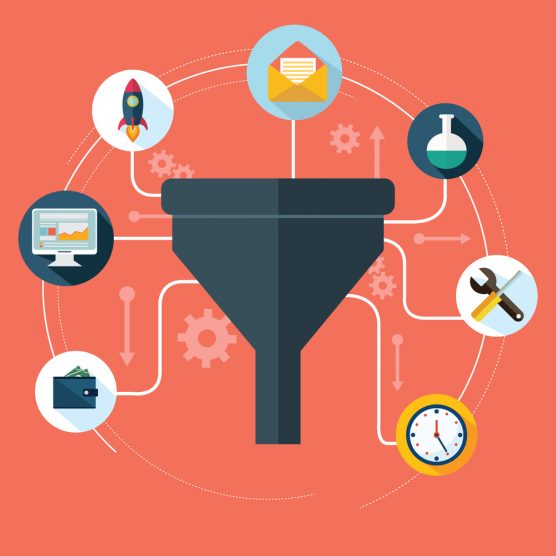6 Types of Data To Collect From Customers And How to Grow Your Marketing Strategy With It

Personalization has hit the mainstream as the best marketing strategy for growing your business. It’s used by niche companies and conglomerates alike in order to create an experience that entices customers to buy. There’s no denying it’s power.
Have you ever found yourself shopping for a new shirt online, only to be bombarded with matching ads later in the day. The ads may even be the exact products your were looking at from the same sites. They’re remarketing based off information you provided. Someone else who shopped for pants will see a completely different set of ads.
The idea is to use a one-on-one marketing strategy to develop a closer relationship with your customer. Omni-channel personalization, with a focus on these data points, can create a thorough approach to tailoring your recommendations based on what you know about the individual. Levels of use will vary, but the goal is clear:
Marketing is no longer about whose ad is seen the most. It’s about who can be more personal.
1. Name
Names have been called the ‘customer’s favorite word’ and for good reason. Would you rather I address you as “Appreciated Customer”, or can we take it to a more personal level? Well Greg, we’ve got a deal for you.
Businesses have been using customer names since people started peddling wares in Mesopotamian markets. When Greg bought that suit, the owner had already learned his name. The next time he walked in, he was welcomed with it. It made Greg feel more appreciated than when he visited other shops. It created a brand loyalty and he’s significantly less likely to take his business elsewhere.
Knowing your customer’s name is easy when you’re talking face to face with her, but how can you do it when thousands of people are browsing your digital store?
Web developers solved this problem long ago. Membership and e-mail sign ups require a name. Even websites that only share your username have begun using your real first name rather than the word ‘profile’ on your browser. It creates a more personalized experience when the web page displays your name in the corner, even if you know it’s an automated system.
By e-mail lists having this information, subject lines can be constructed to appear like personal messages. Seeing their own name elicits a reaction from the brain, forcing them to slow down and read the text. Campaign Monitor found that working personalization into an e-mail subject line increased open rates by 14.68%. With a list of 1,000, that translates to nearly 150 more people opening your message. That’s 150 more potential sales just because you directed the letter at Greg. Talk about a great ROI on personalization.
2. Location
Where using a name is great, MailChimp would argue that city names are even better.
Locations can be used to expose customers to events in a given area. Is there an expo or event that you want to share with your fans. Directed messages at their location can be the quickest way to do it.
Sending e-mails about a race in Seattle to people who live in New York City will cause your open rate to drop drastically. Meanwhile, your audience in the greater Seattle area may now attend, increasing engagement with your brand.
Gathering this information can be done through two key methods. You can have customers provide their location when signing up for different features, or you can have them grant permission using a geo-location enabled app.
Marketing Land claims mobile brand ads are seeing a 20% increase in conversions when coupled with location data. Need more reasons? They also found that “69% of Google searches include a specific location.” That’s more data you can use in your marketing strategy.
A study by White Horse Productions, Inc. showed that 8% of the users of social apps running geo-location systems believe “savings in discounts and merchant rewards” are the most important benefit. Though this number seems low, given the sheer volume of traffic that social media receives on a daily basis, this number is astounding. Since 60% of that poll thinks the social aspects are most important, it could be argued that discounts and deals would play a larger secondary role for most.
Businesses like Yelp allow their customers to ‘check-in’ to different establishments. Later, they’re reminded to review the places they visited. This creates more interaction with their site and app, as well as customer pride because they’ve contributed to the product. The ‘check-in’ strategy also brings more engagement on social media, showing up on the newsfeeds for everyone to see.
The largest battle with tracking a customer’s location is the concern for privacy. Many smartphone users will disable the GPS feature because of a fear that the information will be used inappropriately. Unfortunately for the honorable business, this leaves the ability to track location to user sign ups and invoices. Still, it’s better than comprising your integrity.
3. Gender
The purple elephant in the room, gender, has become a touchy subject in today’s social climate. Still, for a business, knowing someone’s gender can translate into better targeting and profit.
A study by G+ proved that targeting genders can be more than efficient. They found that females make more of the buying decisions, including everything home furnishings to cars. They also saw that women are more likely to use a specific brand if it supports a cause.
Using this information alone, you could develop a strategy to target your female customers with ads. Select the cause you’re most affiliated with, expressing a cause, and have better luck at winning them over. Even better is that if it’s a large purchase, you know to focus more attention on that gender.
Learning your customer’s gender also gives you the ability to tailor recommendations on page. If you’re a clothing company that sells to everyone, ads offering skirts will be better directed at women, while men’s products are better with them. This technique would still require a Facebook pixel or local account, but it could pay dividends in the long run.
4. Previous Purchases
Along with the gender focused advertising, many sites will tap your previous purchases to target you. Amazon is excellent at this strategy.
When you’re comparing items, say a sleeping bag, you can go through dozens of pages without making a purchase. Don’t worry, when you open your Facebook later, you’ll find that Amazon has a kindly reminder waiting for you. They’ll use sponsored posts to keep your mental shopping cart alive and even offer recommendations for some of the sleeping bags you were looking at earlier.
You can follow this same approach, or target on a finer scale. When a customer purchases a sleeping bag from your site, launch an automated email chain that offers them related products, like lamps or walking sticks. The odds of a customer buying from you again are higher than the chances of that initial purchase. It’s marketing done easy.
On the other side of the spectrum is the abandoned shopping cart. Maybe a customer became distracted. Maybe they found your prices too steep. By knowing that they didn’t make a purchase, but had intended to, you can attempt to reengage the customer. Remind them of the cart or make new offers. There are a lot of possibilities just by identifying their cart status and it can all be crafted into an automated system.
In the same sense, send emails when discounts appear on items they’ve expressed interest in, be it from a wishlist or deleted cart items. Study everything about a customer’s purchase history and you can learn some specific ways to target the individual.
5. Interests
If interests aren’t part of your personalization marketing strategy, you’re doing it wrong. They can tell us everything we need to know in order to interact with customers.
Interest marketing is especially effective on social media platforms. Sites like Facebook and Twitter build profiles on all of their users, including everything they like. These likes translate into marketing channels.
By applying ads to social media, you can automatically engage those who prefer the niche you’re addressing without having to sort them out. A billboard is a shot in the dark. Social media advertising, thanks to the ability to target interests, is a point blank shot.
6. Web Behavior
A customer’s behavior on the web can lead to a lot of profitable information. Everything from web content to e-mail interaction can be tracked in order to improve your marketing strategy. Using omni-channel personalization with knowledge of their trends can be even better.
To start, figure out what the most popular key words for your business are. Once you have them, develop landing pages for each. Highlight those keywords as many times as you can in the page to be sure that’s the one they find and let the personalized experience begin. Depending on how many keywords you want, you can continue to develop new pages, offering a deeper connection to your audience.
Those keywords can say a lot in themselves by defining where the customer is in the purchasing stages. If they’re searching for a specific knife review, odds are that they’re looking to purchase that knife. If they’re looking for the 7 best survival knives, they may be a little further away. Through personalization, you can recommend products and advertisements based off where they are in that process.
Tracking behavior is where your content marketing can pay off. Everyone who has run a business with an online presence understands that cookies can be pivotal in your marketing strategy. By tracking which pages your customers are viewing, you can tailor content specifically to their interest. This can be a recommendation to other articles and products based off the category or focused bonus material.
Content upgrades that are directly related to the topic of the page can provide a great window for opportunity. If a customer is reading about repairing chainsaws, a guide to felling trees with one may be enough to get his e-mail. From there, he’s entered your sales funnel, leaving him open to more e-mails and potentially other personalization tactics from you.
Along with getting those messages out, you need to pay attention to how your customers interact with your e-mails. Spot which links are getting the most use and place the customers into a segmented list. Send them more emails that focus on the topic they’re interested in. Reduce the size of your segments if you can, creating various targeted sub-lists while still sending them e-mails from the main subscription.
Collecting data to grow your marketing strategy is as simple as opening a few analytics accounts and paying attention to customer behavior. Run as many tests as you can to learn what works and what doesn’t to maximize your potential.
The information you gather can be the difference between a year of growth or another twelve months of your peers passing you by. Develop a strategy for personalization and take the lead.







